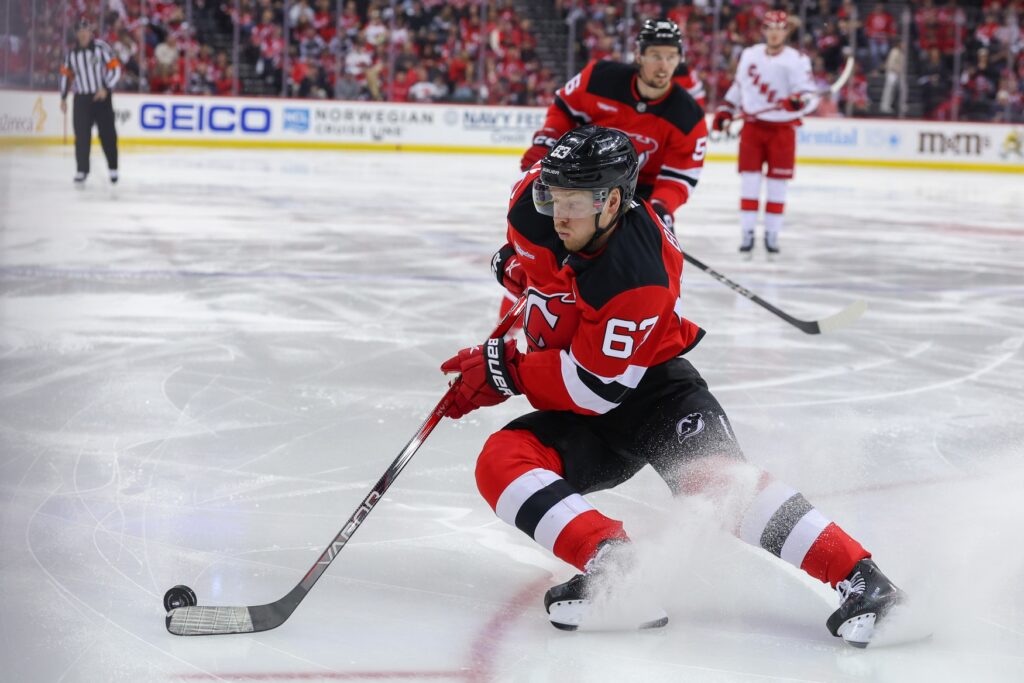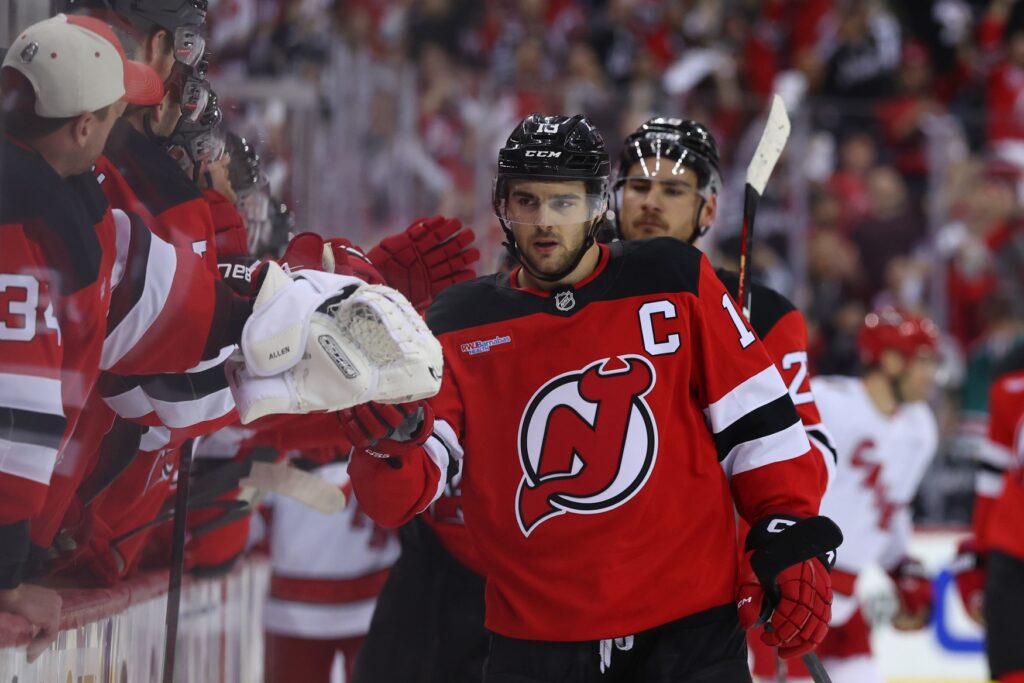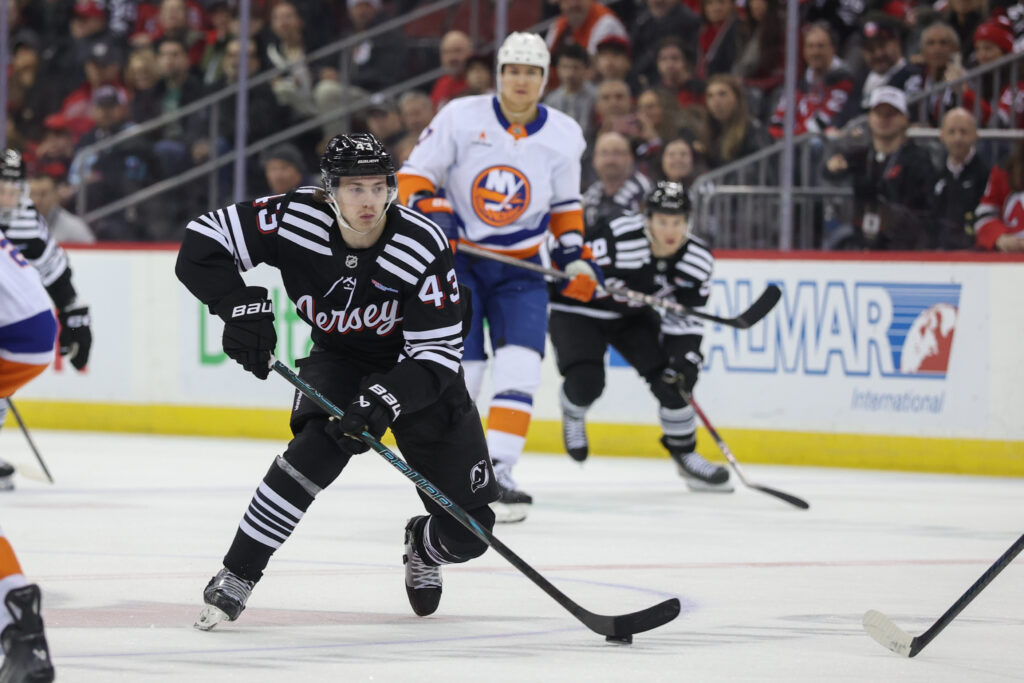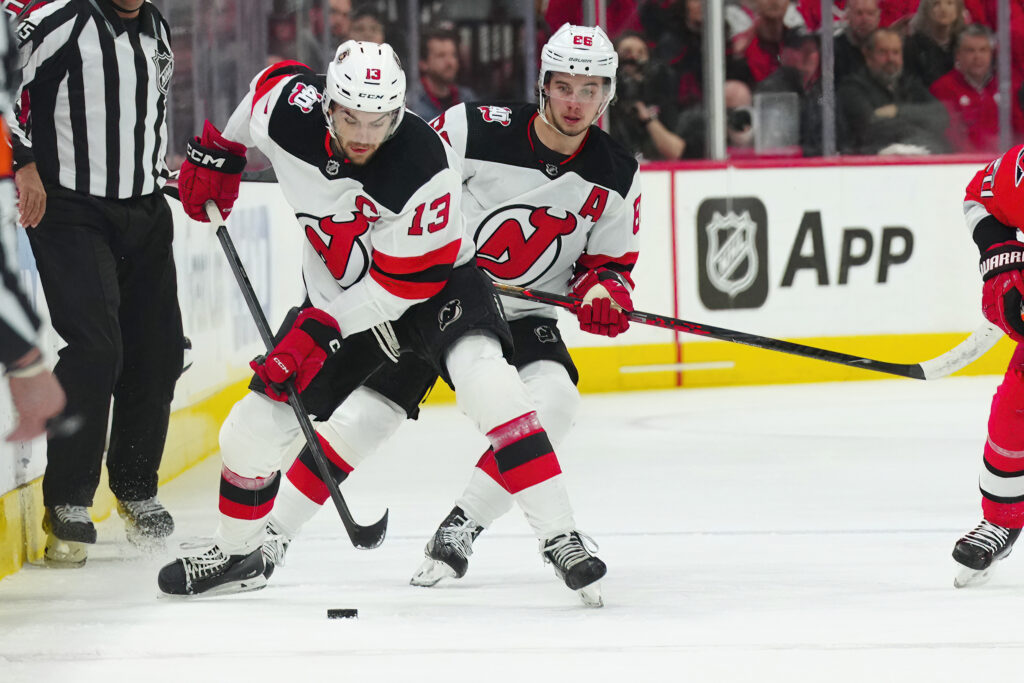The air in Newark is thick with a familiar, yet potent, mixture of anticipation and anxiety. As the New Jersey Devils opened training camp on Sept. 18, the narrative for their 2025-26 campaign began to crystallize. This isn’t a rebuild. This isn’t a hopeful longshot. This is a team built to win now, staring down a season that will serve as a referendum on its core, its depth, and its ability to overcome the hurdles that have previously relegated it to the league’s second tier.
After a first-round playoff exit last spring, the mandate is clear: make the postseason in consecutive years for the first time since the 2009-10 season and do some real damage once there. But between that goal and its execution lies a minefield of contract disputes, significant injuries, and the ghosts of an offense that sputtered at the worst possible time. The Devils have the high-end talent; the question is whether they have the resilience and the solutions to finally take the next step.
Stars, Stripes, and Swiss Precision: The Undisputed Core
Any conversation about the Devils begins with the trio of forwards who now carry the weight of the franchise. The recent NHL Network top-50 player rankings validated what Devils fans already knew: this team is powered by elite talent. Winger Jesper Bratt (ranked 45th) is coming off a staggering 88-point campaign, cementing himself as a premier offensive driver. Captain Nico Hischier (40th), lauded for his two-way dominance and leadership, potted a career-best 35 goals last season.


And then there’s the straw that stirs the drink, Jack Hughes (31st). Despite being limited to just 62 games, Hughes was electric, posting 70 points and serving as the central nervous system of the Devils’ attack. Alongside established threats like Timo Meier and Dawson Mercer, this forward group represents the team’s undisputed strength.
The stability extends to the crease, where the tandem of Jacob Markstrom and Jake Allen provides a reliable, veteran presence that was instrumental in the team’s defensive turnaround last season. On the back end, a veteran group of Dougie Hamilton, Brett Pesce, and the rugged Brenden Dillon form a solid foundation, with the brilliant young Simon Nemec having already graduated from prospect to core piece. On paper, this is a roster that should scare people.
Cracks in the Foundation? The Blue Line Questions Looming Large
While the core may be set, the periphery is fraught with uncertainty, particularly on defense. The most glaring issue is the empty stall in the locker room belonging to Luke Hughes. The dynamic young defenseman remains an unsigned restricted free agent, and his absence from training camp is the single largest cloud hanging over the organization. General Manager Tom Fitzgerald has time to get a deal done before opening night, but every day Hughes isn’t on the ice with his teammates is a day the team isn’t building the chemistry it will desperately need.

Compounding the problem is a significant blow to the team’s depth. Jonathan Kovacevic, a workhorse who suited up for 81 games last season, is recovering from knee surgery performed in May and will miss the start of the regular season. His absence, along with a more minor injury to Stefan Noesen, carves a hole on the right side of the defense and puts immense pressure on the team’s prospects to prove they are ready for prime time. The front office is playing a high-stakes game of roster Jenga before a single meaningful puck has been dropped.
Roster Battles and Waiver Wire Chess
Kovacevic’s injury, while unfortunate, creates a golden opportunity, and several young players are poised to seize it. The annual Prospect Challenge in Buffalo offered a glimpse of the reinforcements coming through the pipeline, and a few names are demanding attention.
Russian forward Arseny Gritsyuk is widely expected to crack the opening night roster, bringing a new dimension of skill to the forward group. On the blue line, Seamus Casey, who got a taste of NHL action last season, is making a forceful case for a full-time role. The emergence of young, capable defensemen like Casey and Nemec is precisely what has fueled the persistent trade rumors surrounding Dougie Hamilton. With younger, cheaper talent ready to assume top-four roles, the front office has some difficult but enviable decisions to make.
Keep an eye on a couple of dark horses as well. Shane Lachance, a towering 6-foot-5 defenseman acquired last March, brings the size and two-way acumen the team values. Meanwhile, 20-year-old Finnish winger Lenni Hämeenaho impressed in Buffalo and could force his way into the conversation for NHL minutes.
These roster battles are complicated by the unforgiving logic of the NHL waiver wire. Goaltender Nico Daws, for example, is no longer exempt and would have to be exposed to all 31 other teams if sent to the AHL affiliate in Utica. This pressure doesn’t exist for the team’s top prospects like Nemec, Casey, Gritsyuk, and Hämeenaho, who can be moved between the AHL and NHL freely. This flexibility gives management a critical tool for managing the salary cap and roster composition, but it may come at the cost of losing a serviceable player like Daws.
Beyond the Personnel: Fixing a Fatally Flawed Offense
For all the talk about individual talent, the Devils’ ultimate success will hinge on a fundamental strategic correction. Last season, the team’s offense was a paradox. They were abysmal at 5-on-5, finishing a shocking 26th in the league. Their success was almost entirely propped up by a lethal power play, which accounted for 61 of their 240 goals.
This one-dimensional approach was brutally exposed in the playoffs. Against the Carolina Hurricanes, the power play, the team’s only reliable source of offense, went completely dry, finishing the series an astonishing 0-for-15. The lesson was painful but clear: to be a true contender, you must be able to score at even strength.
In response, the coaching staff is implementing a new power-play philosophy designed to be less reactive and more aggressive. The focus is on proactive puck movement to force defensive mistakes, rather than waiting for seams to open. The initial units are telling:
- PP1: Dougie Hamilton, Jack Hughes, Nico Hischier, Jesper Bratt, Dawson Mercer
- PP2: Simon Nemec, Arseny Gritsyuk, Timo Meier, Ondrej Palat, Evgenii Dadonov
This tactical shift is vital, but it must be paired with improved 5-on-5 play. The good news is that the team’s defensive structure is sound. After finishing 27th in goals against two seasons ago, the Devils made the league’s biggest leap, finishing 5th last year, thanks in large part to Markstrom and Allen combining for nine shutouts. If they can find even league-average offense at 5-on-5, this team becomes exponentially more dangerous.
The Verdict: Contender or Pretender?
Ultimately, this all comes back to one man. The Devils’ ceiling is directly tied to the health of Jack Hughes. He has surpassed the 62-game mark only once in his career, and his season-ending injury last year against the Vegas Golden Knights was the moment the team’s legitimate aspirations took a critical hit. A full, 82-game season from a healthy Jack Hughes makes the Devils a legitimate threat to come out of the East. Anything less, and they are a bubble team fighting for their playoff lives.
The betting markets reflect this uncertainty, with one prominent analyst projecting the team to finish under 99.5 points and offering +270 odds for them to miss the playoffs entirely. The schedule does them no favors, with 15 back-to-back sets and a gauntlet of divisional rivalries. Encounters with the Hurricanes, their playoff executioners, and the rising Columbus Blue Jackets will be four-point battles. Tough matchups against Western powerhouses like Dallas and defensively stout teams like Winnipeg, who suffocated them last year, will test their mettle.
The pieces are on the board. The star power is undeniable, the goaltending is solid, and the defensive structure is in place. But the margin for error is razor-thin. Can they get Luke Hughes signed? Can the prospects fill the void left by injury? Can they finally generate consistent offense at 5-on-5? And most importantly, can Jack Hughes stay healthy? The answers to these questions will determine whether the 2025-26 season is a triumphant step forward or another frustrating chapter of unfulfilled potential.
Created with the aid of Gemini AI
